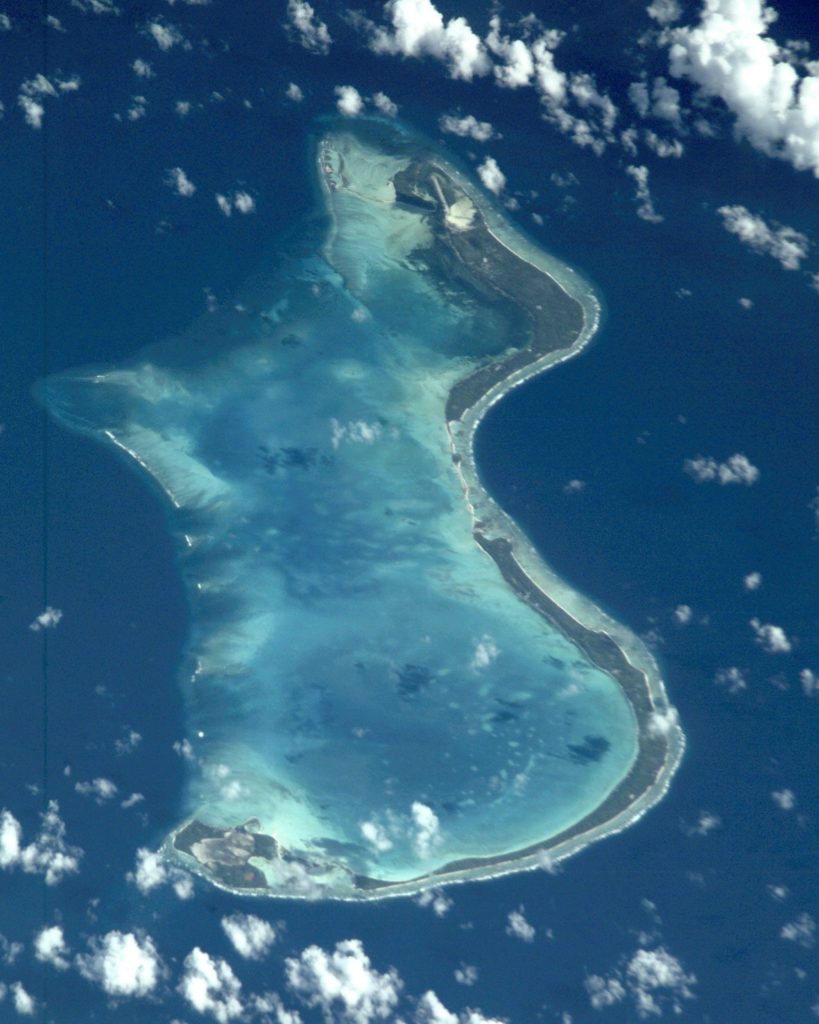If you’re heading for these stunning islands for a holiday or a new life in paradise, impress the locals with your extensive knowledge by swatting up on these fun facts about Kiribati!
1. Kiribati isn’t actually an island.
Kiribati is an archipelago consisting of 33 coral atolls in Oceania.
2. Where is Kiribati?
Its nearest neighbours are Hawaii to the north, Mexico, Guatemala, El Salvador, Nicaragua, Costa Rica, Panama, Colombia, Ecuador, Peru and Chile to the east, French Polynesia, Cook Islands, Niue, American Samoa and Tokelau to the south and Nauru, Marshall Islands and the Federated States of Micronesia to the west.
3. Here are the coordinates you’ll need.
If you’re thinking of heading to Kiribati to explore the extensive reefs and the stunning wildlife that lives there, follow the coordinates of 1.4667° N, 173.0333° E to find yourself amongst these beautiful islands.
4. The reefs out here are spectacular.
The terrain here is dominated by low lying coral atolls, surrounded by stunning reefs.
5. The total area is around the size of an English county.
The total land area of Kiribati is 313 square miles (811 square kilometres)…that’s around half the size of Pembrokeshire.
6. However, not many people live here.
Kiribati’s population was 131,232 in 2022…that’s around 20,000 less than Pembrokeshire in Wales.
7. What do citizens call themselves?
Ever wondered what the locals are known as? They’re called I-Kiribati (both singular and plural!).
8. What’s the capital of Kiribati?
The capital is South Tarawa; it covers an area of 6 square miles (16 square kilometres) and had a population of 46,000 in 2014.
9. It’s sweltering out here!
I-Kiribati enjoy a tropical climate with hot and humid weather which is moderated by trade winds.
10. No animals are native to the region.
There are no animals that are native to Kiribati, although early settlers brought dogs and pigs with them. The waters surrounding Kiribati, however, are teaming with fish, seahorses, crabs, jellyfish, sharks, whales and dolphins, plus many more!
11. Nuke testing took place here decades ago.
Surprisingly, Kiribati was used for nuclear weapon tests by the UK during the late 1950’s and the USA in 1962!
12. Do people speak English in Kiribati?
The official languages of Kiribati are English and Kiribati.
13. The currency accepted here might surprise you.
If you’re planning on purchasing one of the handmade baskets, necklaces fans, mats and cups made from leaves, coconut shells and seashells, you’ll need to exchange your money into Australian Dollars, the official currency here.
14. The life expectancy here is reasonably healthy.
I-Kiribati live for an average of 67.85 years (2017).
15. It used to belong to the British.
Once a British colony, Kiribati gained independence in 1979.
16. What’s the industry in Kiribati like?
Kiribati grows copra (dried coconuts kernels), taro, sweet potatoes and breadfruit; they also catch fish.
Its industry consists of handicrafts and fish.
Kiribati exports coconuts, copra, fish and seaweed.
FAQs about Kiribati
Is Kiribati a poor country?
Kiribati is poor compared to much of Oceania. However, this is largely thanks to the country not being linked to mainland suppliers.
Which country overrules Kiribati?
Up until the late 1970s, it was owned by the UK - however, since that time, it’s been independent.
Is it possible to visit Tarawa?
Yes! While you may not always be able to get flights out here, it’s well worth exploring.
Do you know any fun facts about Kiribati? Share them in the comments below!
